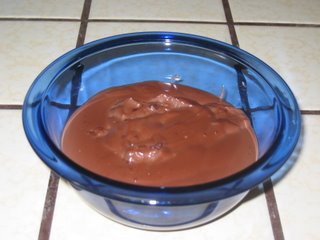
What better way to use milk that's going to go to waste or spoil in the next day or two. And who doesn't love chocolate? This recipe is terrific because it is so simple yet so wholesome and satisfying. This recipe comes from Moosewood Restaurant Low-Fat Favorites which is one of three Moosewood Collective cookbooks I own. Their recipes are easy to make and follow. Their recipes some times call for unusual ingredients but I love that they sometimes recommend using canned goods which makes life and cooking easier! All the recipes I have tried from their cookbooks have been successful, even in my first attempt.
Cooking time: 20 minutes
Messy factor: low
Ingredients
-3 tbsp cornstarch
-3 tbsp sugar
-2 tbsp unsweetened cocoa
-2 cups skim milk
-1 tsp vanilla extract
In a small saucepan, combine the dry ingredients until mixed well. Do get the clumps out. Add the milk. Cook on medium heat until the pudding comes to a boil, stirring constantly. FYI, it is not a traditional 'boil' per say, it's more that you see big chocolatey bubbles bursting. Lower heat and simmer for a few more minutes. Stir in the vanilla and then pour pudding into your favorite dish. Serve warm or chilled.
My modifications and suggestions
-2 cups 1% milk
-Used Ghirardelli Unsweetened Cocoa
Be sure to stir well, not casually, and with a wooden spoon or silicone spatula. Ensure the stirring utensil reaches the bottom of the pan so that the chocolate does not stick to the bottom of the pan and burn. I prefer wooden spoons because of its ability to scrape the bottom of the pan well.
I bet this pudding would be even more amazing if I used whole milk.
I love eating this with fresh berries and/or bananas. I sometimes eat chocolate pudding for breakfast.
Eat and enjoy!
